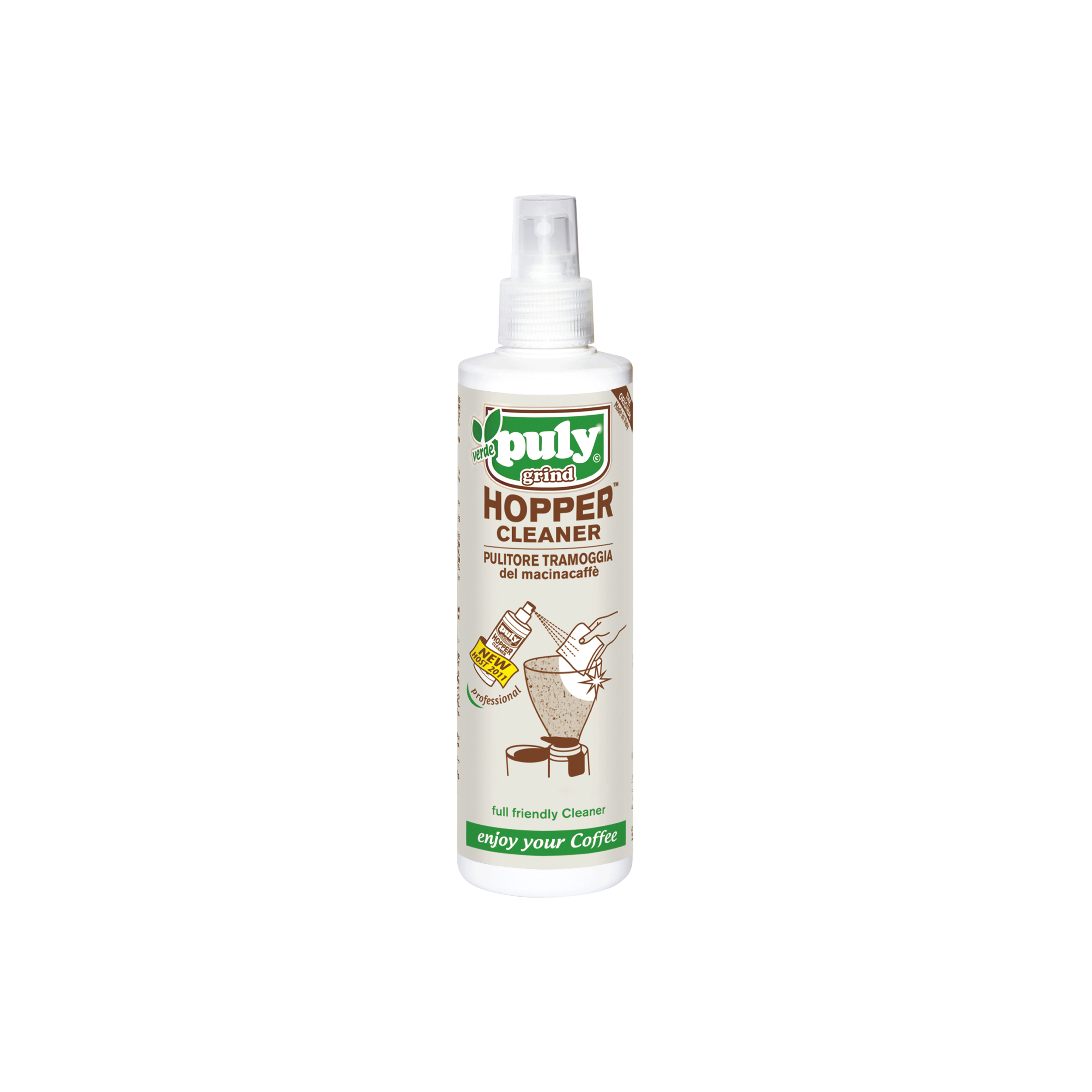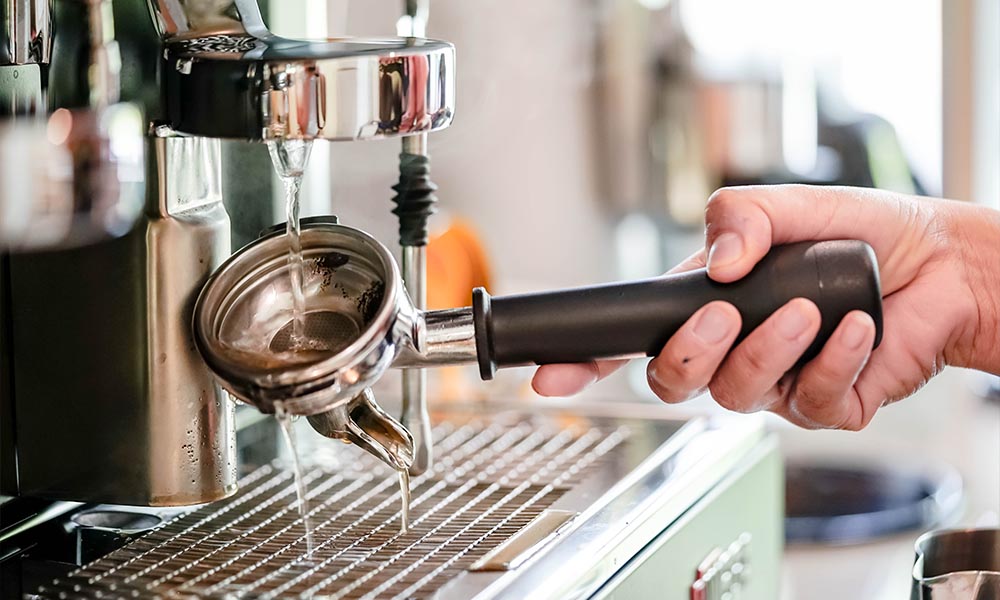
Puly Grind Hopper
Cleaner for Coffee Grinder Hopper and Doser


When you ask yourself how to clean your coffee machine, you’re actually protecting both the sensory quality and the technical reliability of the equipment. Residues of oxidized oils, limescale, and biofilm alter the water flow, lower the effective extraction temperature, and taint the aroma with bitter and metallic notes. In fact, when hard water is used frequently, limescale forms, while the vegetable oils from coffee oxidize upon contact with air, creating an unpleasant rancid smell. A consistent coffee machine maintenance protocol keeps the water flow stable, preserves the integrity of the seals, and delivers sweeter, smoother, and cleaner-tasting cups. That’s why knowing step by step how to clean your coffee machine isn’t a domestic detail, but a true act of a coffee professional. On CaffèLab you can find the best coffee machines—from professional models to home-use options like our brand’s moka pot.
Descaling is the first pillar. Use citric acid or a specific descaling agent dissolved in warm water, following the manufacturer’s recommended doses.

To clean a capsule or pod coffee machine, the principle is the same, focus on the capsule housing or pod holder.
On our website, you will find everything from the best automatic coffee machines to the finest coffee blends, so you can enjoy the pleasure of coffee with the most exquisite aroma in your own home.
When it comes to cleaning the moka pot, there are a few essential steps. To clean the coffee maker properly, disassemble each component—boiler, funnel, gasket, filter plate, and lid—and wash them with hot water and a soft sponge, avoiding scented detergents that leave aromatic residues and especially abrasive pads that scratch aluminum. To remove limescale, perform a deep clean using a 1–2% citric acid solution and rinse thoroughly. To eliminate rancid odors, use PulyGrind Hopper detergent. Baking soda isn’t ideal because it leaves an alkaline film that affects the next extraction. Check that the safety valve is clear and replace the gasket when it becomes hard or flattened, an imperfect seal causes over-extraction and bitter flavor. Dry all parts completely before reassembling to prevent oxidation and stale odors.
Establishing how to clean your coffee machine also means defining the right cleaning frequency. Hard water should never be used for coffee because, beyond its unbalanced mineral content, it contains chlorine. With filtered or softened water, you can extend cleaning intervals—but never skip the post-treatment rinse. Remember: limescale buildup means irregular temperature and reduced flow, leading to slower extraction and a flat taste. If you use resin filters in the water tank, replace them on schedule, a saturated filter no longer protects and may release unwanted compounds. Daily care, emptying and refilling the tank, drying trays and grids, purging the steam wand, is the foundation for more thorough maintenance.
Unusual pump noises, uneven water flow, pale crema, and a weak aroma are clues of a dirty or scaled circuit. If after maintenance you notice greater sweetness, fuller body, and a clean aftertaste, you’re measuring the success of the procedure. Combine this routine with choosing water that has the correct mineral profile, and you’ll find that learning how to clean your coffee machine becomes a virtuous habit—fewer breakdowns, more consistent cups, and an aromatic performance that speaks the language of perfectly made coffee, whether you use a home espresso machine, a capsule system, or your beloved moka pot.